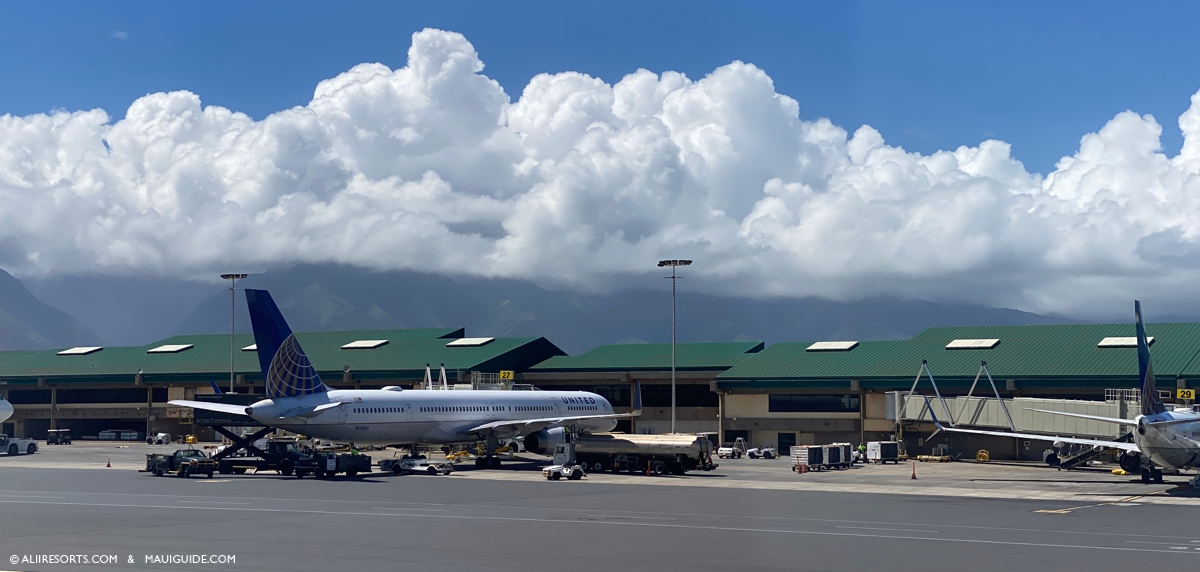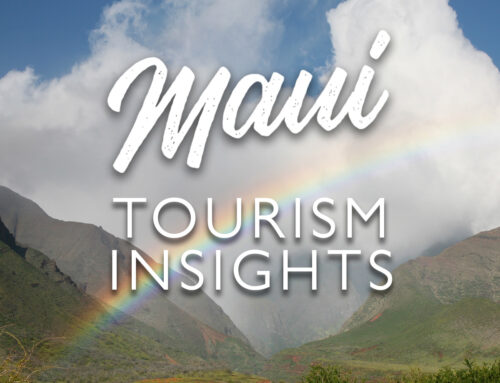So, you’ve settled on Maui for your next vacation. Now, the planning begins! It’s easy to get overwhelmed, but we can help. From packing to what to do and where to stay, here’s everything you need to check off your ‘need-to-know’ list.

What You Should Know Before Traveling to Maui
Getting To Maui
Maui has one major airport: Kahului Airport, OGG. Kahului Airport is serviced by most major US airlines, with direct flights from the West Coast.

Maui has two other commuter airports in Kapalua and Hana. You can fly from Honolulu to Kapalua on Mokulele Airlines, a local commuter airline. You can also fly from Kahului to Hana on Mokulele. Mainland flights do not service Kapalua and Hana Airports. Keep in mind, these are tiny airports. You’d need a ride from the airport if you fly into one of these.
Getting Around Maui
The best way to get around Maui is by renting a car. Renting a car is the most efficient way to get around Maui, as Ubers and taxis are pricey and not always readily available.

Maui does have public transportation (the Maui Bus), but routes do not visit some of the island’s most popular attractions, like Haleakala Crater, Iao Valley, and the Road to Hana.
Popular Areas to Stay
The most popular areas to stay on Maui are South Maui (Kihei, Wailea, and Makena) and West Maui (Kaanapali, Kahana, Napili, and Kapalua). Search Maui Rentals.

These areas are favored for their great beaches, sunny weather, restaurants, and abundance of accommodations.
Weather
Maui has warm weather year-round. Average temperatures only fluctuate a few degrees. In the winter, it can dip into the mid-60s at night. But no matter what season you visit Maui, you can expect temperatures to sit around 75-85F. 90 F is a scorching day on Maui.
Keep in mind that Maui has many microclimates. The temperature and weather in Hana can vary greatly from the temperature in Kihei. Plus, different elevations will always have different temperatures.
Summer (June to September) is the driest time of year on Maui, while winter (December to March) is the rainy season. If you travel to Maui in winter, you have a higher chance of encountering a rainstorm, especially on the road to Hana.
Park Reservations
Three popular parks on Maui require reservations. Without reservations, you will be denied entry. You need reservations for Waianapanapa State Park, Iao Valley State Monument, and sunrise at Haleakala Crater. You can make reservations easily online.

Tipping
Tipping etiquette is usually 15-25% at dine-in restaurants and 10-15% on excursions like snorkel tours. If you hire a private guide, 20% of the cost is usually appropriate for a full-day tour – or more, because Maui has awesome tour guides that will probably blow you away.

Packing List
Here’s a complete packing list to ensure you don’t forget a thing. You might not need everything listed, but this will give you a good idea of what you need.
- Clothing
- Swimwear
- Casual Wear
- A Nicer Outfit or Two
- Sweatshirt: For chilly nights or watching the sunset or sunrise at Haleakala Crater.
- Pants: Again, for chilly nights or adventures at Haleakala Crater.
- Sandals or Flip Flops
- Activewear
- Sneakers/Walking Shoes
- Light Rain Jacket: A necessity in rainy season, especially on the Road to Hana.
- Beach Cover-Up
- Essentials
- Driver’s License or I.D.
- Passport: If traveling from outside the United States.
- Cash: Small bills come in handy for tips and the Road to Hana.
- Travel Insurance
- Itinerary and Hotel Info
- Prescriptions
- Toiletries
- Accessories and Other
- Sunglasses
- Sun Hat
- Daypack or Beach Bag
- Reusable Grocery Bags: Maui grocery stores do not offer plastic bags. Bring your own bag or buy a paper bag for ten cents each.
- Mosquito Repellent: Good for muggy days or the Road to Hana. Consider eco-friendly bug spray if you’re swimming in streams or the ocean.
- Reusable Water Bottle: Ditch plastic, go reusable.
- Phone and Other Electronic Charges
- Beach Gear
- Snorkel Gear: Optional. Many condos provide snorkel gear. Or you can rent gear from various snorkel and dive stores.
- Rashguard: For sun protection. Pack ahead of time or purchase on Maui.
- GoPro or Waterproof Phone Case
- Towel: Good to bring, just in case. Hotels and condos provide towels, but it’s smart to have your own. You don’t want to be towel-less after you check out or if you switch accommodations halfway through your trip!
- Reef-Safe Sunscreen: Maui has a ban on sunscreen that is not mineral-based. If you pack your own sunscreen, make sure it is mineral-based. Otherwise, wait until you get to Maui to purchase sunscreen.

What To See
Makena State Park – Makena State Park comprises three beaches: Big Beach (Makena Beach), Little Beach, and Oneuli Beach. Big Beach is one of the largest beaches on Maui and the most popular of the three. However, the shorebreak here can be dangerous (read: USUALLY dangerous), and swimming is not advised. Come for beach walks and to admire the scenery. Little Beach is accessible by foot only, located by climbing over the hill from Big Beach. Little Beach is a nude beach, so don’t be caught off guard! Lastly, Oneuli Beach is located on the Wailea side of Makena State Park. This beach has dark – almost black – sand and has excellent snorkeling when the water is calm.

Sugar Beach – This is the longest beach on Maui, stretching six miles from North Kihei to Maalaea. You need to visit this beach at least once while on Maui. The best time is in the morning before the tradewinds come up. There is also a lot to do in the Sugar Beach area, from exploring Kealia National Wildlife Refuge to paddling with Kihei Canoe Club and indulging at Sugar Beach Bake Shop. Consider staying at one of the condos on the southern end of Sugar Beach.

Kamaole Beaches – The Kamaoles are three pristine beaches in the heart of Kihei. These beaches are known for their soft sand, great swimming and snorkeling, and picture-perfect sunset views. If you’re looking for a beach to spend the day at, you can’t go wrong with any of these three. Plus, countless cafes, restaurants, shops, and condos are within walking distance.

Road to Hana – Driving the Road to Hana is one of the most popular things to do on Maui – if you’re up for it. This two-lane highway features over 600 curves and 59 bridges, twisting and turning through dense jungle and past flowing waterfalls. Consider taking a Road to Hana tour to see the best sights.

Haleakala Crater – Haleakala Crater is a must-visit while on Maui. This dormant volcano towers above the island at 10,000 feet. Many visitors come to watch the sunrise or sunset, but Haleakala Crater can be explored at any time of day. Walk through lush cloud forests, explore the visitor centers, or visit the sandy Mars-like summit. Reservations are required for sunrise.

Iao Valley – Located in Wailuku, Iao Valley is one of the most significant historical sites in Hawaiian history. King Kamehameha led a major battle here in 1790 to unite the Hawaiian Islands under one rule. Today, visitors flock to the state park for its stunning beauty. Enjoy paved walking trails and striking mountain views. Reservations are required for out-of-state visitors.

Molokini Crater – Molokini is one of Hawaii’s most famed snorkeling spots. This crescent-shaped islet is the remnant of a volcano that last erupted over 250,000 years ago. Today, it is a marine sanctuary with epic snorkeling. Visibility here can often reach over 100 feet.

Maui Ocean Center – The Maui Ocean Center is Maui’s largest aquarium. This is a must-visit for kids – or adults who love the ocean! Here, you can come face to face with large sharks and stingrays, see the creatures that occupy Hawaii’s nearshore reefs and deep waters, and learn about Hawaiian history and culture.

La Perouse/Ahihi Kinau – Here, you can see Maui’s most recent lava flow, which spilled from Halekala’s southern flank between 250 and 500 years ago. You can snorkel the protected waters at Ahihi Cove or explore the deeper waters at Kanahena Beach (also called Dumps). However, one of the biggest attractions here is the Hoapili Trail, which travels along the coast through the lava fields. Most hikers choose to hike to Hanamanioa Lighthouse before turning back.

Need help finding Maui tours or accommodations? Alii Resorts is your number-one resource for all things Maui. See you here on the Valley Isle soon!






